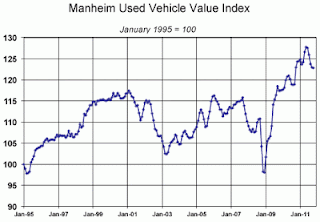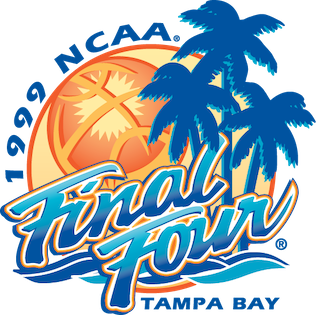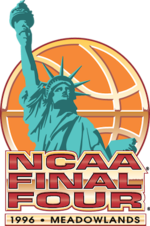
On a late March evening in 1991, in the dark basement of what was then a bar (but is now a car dealership), a dozen baseball enthusiasts conducted a draft for the first season of what became Missouri Mudville Diamond League fantasy baseball league. This was among the first fantasy leagues in a time even before fantasy football had even been conceived. I had read about the concept in a sports magazine and recruited several other baseball fanatics to form the league.
According to Wikipedia, the scoring system used in the Mudville League is called in "
Rotisserie" after the New York City restaurant, La Rotisserie Française, where its founders met for lunch and first played the game. At the time, it was the only scoring system known and that league's original owner also followed rules laid out by a magazine.
The first several seasons, players were chosen in an ABC-CBA draft fashion. Later, an auction was introduced. The auction introduced a whole new dynamic to the league as owners had to budget and stay within the salary cap.
In addition to me, the only other charters members remaining are Tom Helland and Harry Haanen.
I served as commissioner of the league for the first 19 seasons before turning over the reigns to Tom Schoenhard before the 2010 baseball season. Cliff Stone was the league's original treasurer before giving way to Wes Schaub prior to the 2008 season. Ryan Schaub took on the duties of commissioner starting with the 2013 season.
Though the league's rules have been tweaked and massaged through the years, the basic framework is fundamentally the same as when it formed back in 1991. Two scoring categories (strikeouts and runs) were added in the late nineties and the number of teams has fluctuated between ten and fourteen teams through the years. The rules for trades, toppers and contracts have been the aspect of the rules most often revisited.
The personal computer was relatively new when the league was formed and email was not in widespread use. Owners had to stop in to my dealership to pick up their stats on a weekly basis and they would call in their moves on a weekly basis. I had to manually enter every transaction so I had an appreciation for owners who did not micromanage!
As the the personal computer became more prevalent, stats services became available. I would have to generate stats and email reports to those who had email addresses. In the late nineties as the web gained popularity, the model moved toward the setup we have today.
To give the history of this league a little perspective, Mike Piazza was a rookie in the league's inaugural year. Carlton Fisk was wrapping up his Hall of Fame career. The league has outlasted just about every career except Jamie Moyer (speculation is that he was drafted in that first Mudville draft!).
The current lineup of owners and their team names are listed below:
Mark Holmes - Tiger Lovers
Mark Krogstrand & John Krogstrand - Flori Pheasants
Harry Haanen - Bombers
Steve & Ryan Schoenhard - Northsiders
Tom Helland - Spud's Buds
Doug Knust - K-Sox
Ryan Lambley - Dogs
Nate Schaub - Schauberknockers
Ryan Schaub - Rabid Rascals
Dominic Desloover & David Hamiel - Hamiel Toes
Adam Schroeder - Benchwarmers
John Hloucha, Jr. - Sandlot Bums
Former league owners and their teams:
Garrett Chilson - Chilipeppers***
Wieks' Wimps - Craig Wiekamp
Steve Conway - Roundtrippers
Treon Fleury & Mike Hollman - Outlaws
Tom Schoenhard - Tommy's Tribe
Jeff Lepkowski & Trent Johnson - Wallbangers
Jeff Hanig & Bryan Rinehart - H2
Cliff Stones - Cliff's Crudes
Mike Augspurger - Mallards
Dave Mentzer - Black Sox
Greg Olson - Cardboard Heroes
Rich Rasmussen - Ras's Staff
Tom Schmidt - MVPs
Rick Hargens - Mudhens
Curt Wagner - Cornhuskers
Harry Knust - Swiss Cornhuskers
John Shepherd - John's Gas House Gang
Casey Hutmacher - TC Wannabees
Reb West - The Rebels
Steve Smith - Beer Bellies
***Chilipeppers was just the last version of Garrett's team. Others include A New Hope, NoMo Money, Chilsonaters & G-Man's Giants, Seems to be a bit like that restaurant that has had many names but the food not so great under any of them!!!
The Schaub family has won their share of titles through the years. Twelve times either Ryan or Wes/Adam has taken home the crown. Ryan has won six times and Wes has won five. Other multiple winners include Harry Haanen and Dave Mentzer, who each won the crown three times, and Tom Helland won twice including the strike shortened 1994 season. Fleury and I remain the only original owners without a title.
2016 - Northsiders - Steve & Ryan Schoenhard
2015 - Bombers - Harry Haanen
2014 - Schauberknockers - Nate & Adam Schaub
2013 - Rabid Rascals - Ryan Schaub
2012 - Schauberknockers - Wes Schaub
2011 - Rabid Rascals - Ryan Schaub
2010 - Bombers - Harry Haanen
2009 - Bombers - Harry Haanen
2008 - Rabid Rascals - Ryan Schaub
2007 - Schaub’s Stars - Wes Schaub
2006 - Rabid Rascals - Ryan Schaub
2005 - Schaub’s Stars - Wes Schaub
2004 - Rabid Rascals - Ryan Schaub
2003 - Black Sox - Dave Mentzer
2002 - Rabid Rascals - Ryan Schaub
2001 - Rabid Rascals - Ryan Schaub
2000 - Spud’s Buds* - Tom Helland
1999 - Cornhuskers - Curt Wagner
1998 - Tommy’s Tribe - Tom Schoenhard
1997 - Schaub’s Stars - Wes Schaub
1996 - Black Sox - Dave Mentzer
1995 - Black Sox - Dave Mentzer
1994 - Spud’s Buds* - Tom Helland
1993 - MVPs - Tom Schmidt
1992 - Schaub’s Stars - Wes Schaub
1991 - Bombers - Harry Haanen
*1994 was a Strike shortened season
Each year, as the league conducts it's annual six hour auction, stories from past auctions, owners and teams flow over beers and lunch. Every owner believes this is the year and each leaves thinking the title will be his come October.
The traveling trophy (with names of champion owners and their team names) was added to the monetary reward for the champion some years ago. We all thought it was a great idea but owners' wives have been known to be less than enthusiastic about the idea. Some have been thought to torpedo their husband's teams so that he would not come home with the trophy hoping to display it on the living room television!
The trophy was named the "Wes Schaub Memorial Mudville Trophy" after original league member, Wes Schaub, passed away in January 2013. Wes loved baseball and recruited his three sons, Ryan, Nate and Adam, to take part in the Mudville League. It is a fitting tribute to Wes. Now the "Wes Schaub Memorial Trophy" is a ballplayer sitting in a recliner with remote firmly in hand. Perhaps this will be more acceptable to the champions' wives!?! I'm still thinking deep in the "man cave".
Among the stories told at auctions, Mike Augspurger's name seems to always come up. Augie was a draft day show by himself. He was never one to let a player go for less than he thought they were worth - which led to two problems: he would end up with more players at a position than he could use and he ran out of money early in the auction and then had to take a considerable break before "dollar days" started. We miss ya Augie!
As the MMDL continues into its third decade (27th year year now!!!), here's hoping that there are no more asterisks for strike shortened seasons, that the drafts continue to be the best day of the baseball season and that I finally win the trophy! Cheers!
Updated 3/24/2017
















































